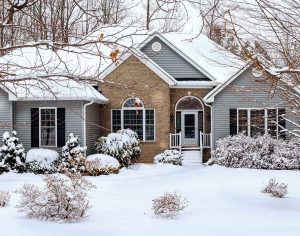6 Effective Steps to Plan a Budget for Your Community
Within an HOA, the most critical task for a board treasurer is to create a healthy financial budget that covers the association’s operating expenses and provides sufficient funds to cover repairs and replacements. To plan a budget effectively, there are crucial steps the treasurer must follow to ensure the community’s goals and priorities are achieved. Here are six vital steps to always perform when planning an adequate HOA budget.
Step 1: Create an HOA Business Plan
When you first begin to plan a budget for your HOA, it’s vital to outline your objectives and establish your short- and long-term goals. During the budgeting process, you must ensure all responsibilities outlined in the governing documents are upheld. This can include minimum insurance coverage that needs to be secured or a specific percentage of assessments that must be transferred to reserves yearly. Also, you must uphold local municipal standards in regards to minimum insurance.
Step 2: Examine Previous Budgets
Looking at previous annual budgets will give you a good perspective of past projections and their comparison to actual expenses. You’ll be able to see when maintenance costs were typically higher and if there were any trends.
During this time, it’s important to remember that you should never cut your budget to avoid increasing fees if it puts you in a position where you are not abiding by local regulations or your own community’s governing documents and by-laws.
Step 3: Send Out RFPs
RFPs (requests for proposals) are essential to send out early to vendors during the budgeting process. You’ll be able to gauge how much vendors will cost and if they can fit within your operating budget.
Step 4: Determine Reserve Study and Costs
When planning a budget, a board treasurer needs to ensure an HOA reserve study is performed to identify capital improvements and the amount of reserve funds needed to maintain them and former projects.
While special assessments may be needed to cover unexpected budgetary costs such as a snow budget that’s $20,000 over, they should not be relied upon to meet the HOA’s basic operating expenses. Don’t count on late fees and fines to meet the budget, as this could be a violation of the community’s governing documents to meet budgetary income requirements.
To ensure the HOA has adequate reserve funds, the treasurer and board must plan capital improvements and increase maintenance fees and/or yearly assessments before such projects begin. Once a capital improvement has been made, boards need to allocate reserve funds to future years to keep up with the maintenance, depreciation, and deterioration.
Step 5: Plug in the Numbers
Now that you have gathered all your financial information, it’s time to plug in the numbers and determine your operating budget for the year. Analyze your projected total expenses and compare them to the revenue you expect to receive. With this insight, you’ll be able to plan a budget that is healthy and effective.
Step 6: Get it Approved
Once you’ve determined an operating budget, you must get it approved by the HOA based on respective state guidelines. Homeowners have a right to view the budget, so you must remain transparent with them and allow them to cooperate in the decision-making process.
Plan Your HOA Budget with Ease
Need help planning your HOA’s operating budget? AR Management provides NJ financial management services for communities of all sizes. If your HOA is looking for assistance in creating a healthy operating budget, contact us today.


![HOA Board Meeting Etiquette [Do’s & Don’ts]](https://armanagementco.com/wp-content/uploads/2021/12/pexels-the-lazy-artist-gallery-1642125-300x236.jpg)

